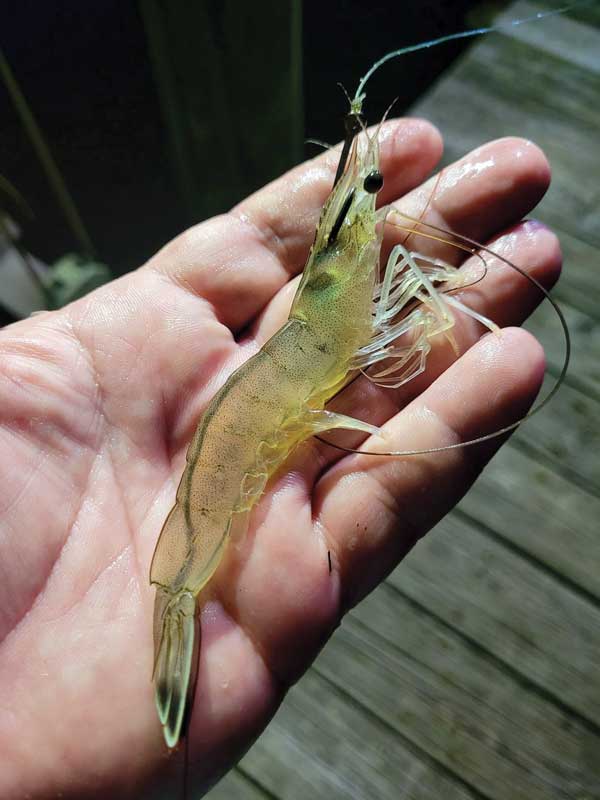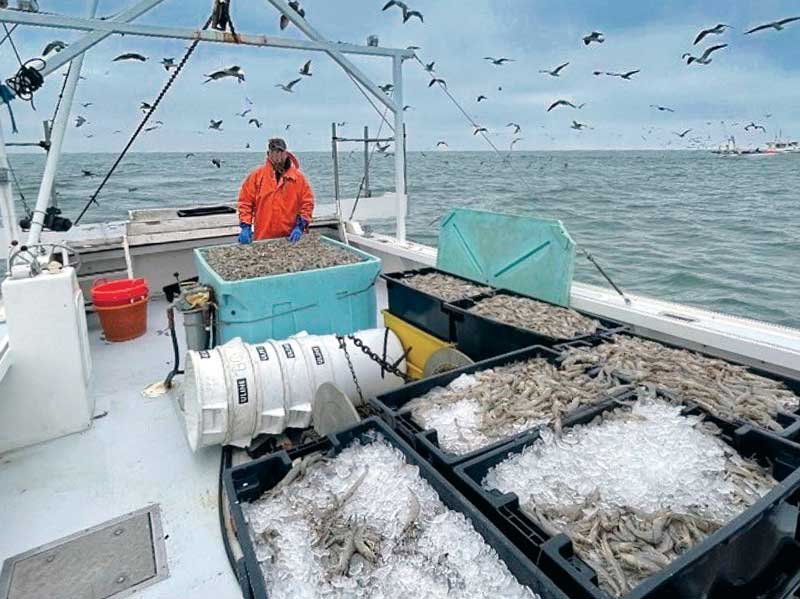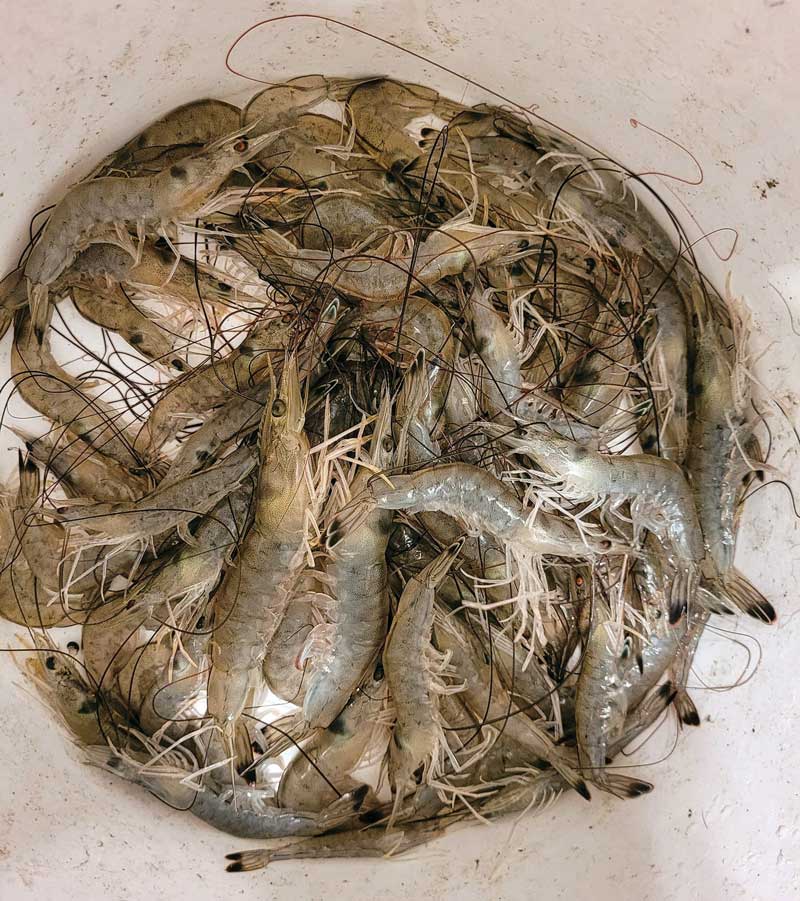Nothing beats fresh and local when it comes to consuming seafood. In regard to shrimp in our area, fresh and local has generally meant Carolina shrimp. But that is changing. Shrimp are moving north. Virginia now supports a small commercial shrimp fleet. Maryland is conducting tests. You can also catch your own.

The most popular shrimp in Virginia (and the Carolinas) are white shrimp, also called green tail shrimp due to the green tint on their tails. They have 10 pairs of walking legs and five pairs of swimming legs. Adults are omnivores. They can grow as large as seven or eight inches. Until the early 1900s, they were not popular as food for humans and were more often used as fertilizer or bait. Today, they are extremely popular with diners and are also eaten by a wide variety of predators in the sea. In Virginia, they are most abundant in the fall and early winter. While the commercial harvest takes place in the ocean, shrimp are also showing up inshore in Virginia. The Elizabeth River Project has found white shrimp in the Elizabeth River system. They have also been regulars in the Poquoson River.
Native shrimp are a better choice for consumers than imported shrimp. The American Shrimp Processors Association reports that 90 percent of shrimp consumed in the United States are imported from China, Ecuador, India, Indonesia, Thailand, and Vietnam. According to Consumer Reports, most foreign shrimp are farmed. They are raised in tanks or ponds and fed pellets that can contain antibiotics and who knows what else. Consumer Reports found bacteria such as E. coli and vibrio in 16 percent of the imported cooked shrimp they tested. Local shrimp are fresh, chemical free, and support local economies.

Watermen have noticed the increasing numbers of shrimp along the Virginia coast for years. In the 1990s, the Virginia Marine Resources Commission (VMRC) responded to this by laying down some rules. At first, this was an experimental fishery. VMRC allowed 12 permits, issued by lottery, to commercial shrimpers. The permits were taken, and the experimental fishery proved successful. Maryland has followed with an experimental shrimp fishery.
One concern with commercial shrimping is bycatch. In North Carolina, for example, trawlers drag nets that can be 55 feet wide. They can deploy this gear almost anyplace day or night. The bycatch is sometimes significant, because the nets catch fish as well as shrimp. When the crews are culling their catch, there can be a melee of seagulls, pelicans, sharks, dolphins, false albacore, and other fish lined up at the buffet table. Many of the bycatch are small spot and croakers.
“We don’t really have that issue in Virginia,” said Chris Moore, Virginia executive director for the Chesapeake Bay Foundation. “In Virginia, the nets are only 16 feet wide. They can only be deployed for 30 minutes at a time during the daytime. Bycatch is not a big problem with this gear fished in this manner. The VMRC did a good job balancing harvest and sustainability. The Virginia program so far is profitable for the watermen but also safe for the resource. What remains to be determined is how these shrimp will influence other fish and fisheries,” said Moore. “This new source of food will probably influence game fish and perhaps their migrations as well.”

If you want to buy shrimp in Virginia, there are several places to try. The first and busiest is Rudee Inlet in Virginia Beach. If the weather is acceptable, the boats go out every day and bring their catch in during the afternoon. They usually unload around the 300 block of Winston Salem Avenue. Signs are posted. However, because the catch can vary each day, it is best to connect with your favorite shrimper before driving down. You can follow the shrimpers on social media, or you can sign up for text messages. That way, you will know when to hit the docks for the freshest shrimp available. Use your favorite search engine to look for “fresh shrimp Virginia Beach.” This past season, some boats also brought fresh catches to Lynnhaven and Cape Charles. That could expand in 2024.
You can get even fresher shrimp by catching your own. In Virginia, you need a fishing license, and the limit is 20 quarts of head-on shrimp per person or boat, whichever is more restrictive. Tossing a cast net is popular and effective but requires practice and skill. There are other ways to catch shrimp that require less skill, such as shrimp pots. They look like a cross between a crab pot and a minnow trap. Expect to pay more than $100 for a good one. Pots are baited with something such as cat food, which is the least expensive, or manufactured pellets, which are neater to use but more expensive. If you have access to a pier or dock in three to 10 feet of water, try your cast net or leave your pot in overnight. Having a bright light on the dock can help attract shrimp as well.
All you have to decide next is whether to eat your fresh shrimp or use them for bait. Whatever you decide, start shrimping this year. You won’t be disappointed.
By Kendall Osborne